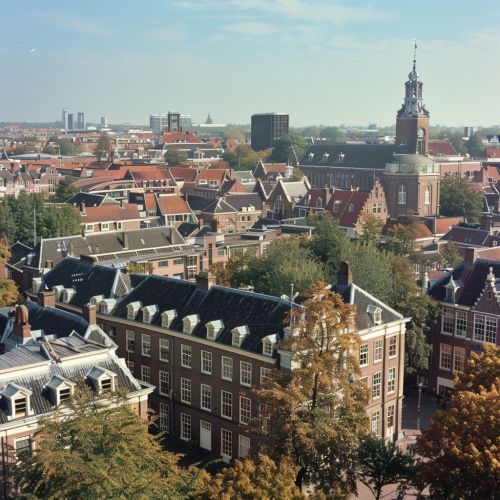George Uhlenbeck
Early Life and Education
George Eugene Uhlenbeck was born on December 6, 1900, in Batavia, Dutch East Indies (now Jakarta, Indonesia). His father, Eugenius Uhlenbeck, was a civil engineer in the Dutch colonial service. His mother, Anne Marie Beeger, was a teacher of French. George was the eldest of four children. He spent his early years in the Dutch East Indies before moving to the Netherlands for his education.
Uhlenbeck completed his early education in Haarlem and then moved to Leiden to attend the University of Leiden. He studied physics under the guidance of renowned physicist Paul Ehrenfest, who was known for his work on the foundations of statistical mechanics. Uhlenbeck received his Ph.D. in 1927, with a dissertation on statistical mechanics.


Career and Contributions to Physics
After completing his Ph.D., Uhlenbeck moved to the United States to work at the University of Michigan as an assistant professor of physics. During this time, he made significant contributions to the field of quantum mechanics. In 1925, together with Samuel Goudsmit, he proposed the concept of electron spin, which is a fundamental property of electrons and other subatomic particles. This discovery was a major breakthrough in the field of quantum physics and led to the development of spin quantum number, a crucial component of the quantum mechanical description of an atom.
In 1935, Uhlenbeck moved to Columbia University, where he worked with Isidor Isaac Rabi, a Nobel laureate known for his discovery of nuclear magnetic resonance. At Columbia, Uhlenbeck continued his work on quantum mechanics and statistical mechanics. He also made significant contributions to the field of molecular physics, particularly in the study of molecular spectra.
In 1945, Uhlenbeck joined the Institute for Advanced Study in Princeton, New Jersey, where he worked alongside some of the most prominent physicists of the time, including Albert Einstein and Robert Oppenheimer. During his tenure at the Institute, Uhlenbeck made significant contributions to the theory of quantum electrodynamics, a field that describes how light and matter interact.
In 1960, Uhlenbeck returned to the University of Michigan, where he served as a professor of physics until his retirement in 1971. During his career, Uhlenbeck also held visiting professorships at several universities around the world, including the University of Paris, the California Institute of Technology, and the University of Colorado.
Legacy and Honors
Uhlenbeck's contributions to the field of physics have been widely recognized. In 1955, he was awarded the Max Planck Medal by the German Physical Society for his contributions to theoretical physics. In 1970, he received the National Medal of Science, the highest scientific honor in the United States, for his work on quantum mechanics and statistical mechanics.
Uhlenbeck was also a member of several prestigious scientific societies, including the National Academy of Sciences, the American Physical Society, and the Royal Netherlands Academy of Arts and Sciences. He was also a foreign member of the Royal Society of London.
Despite his numerous achievements, Uhlenbeck remained humble and dedicated to his work. He once said, "The only thing that matters is to be a good scientist."
Personal Life and Death
Uhlenbeck married Else Ophorst in 1927. The couple had two children, Anne and Oliver. Uhlenbeck was known for his love of classical music and literature. He was also an avid hiker and enjoyed spending time in nature.
Uhlenbeck died on October 31, 1988, in Boulder, Colorado, at the age of 87. His legacy continues to inspire physicists around the world.
